Recent Blog Posts
going away
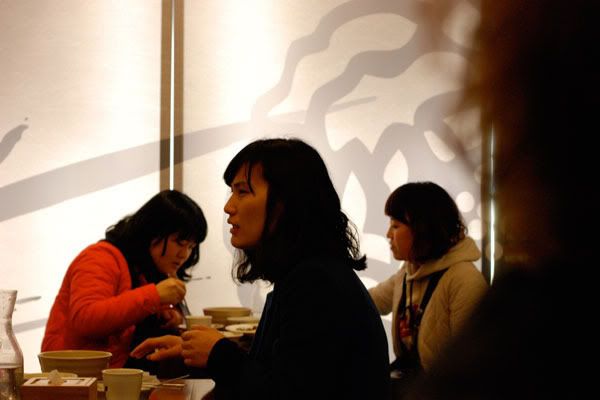

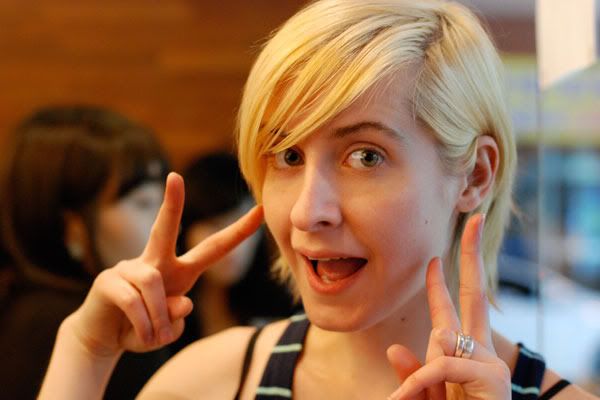

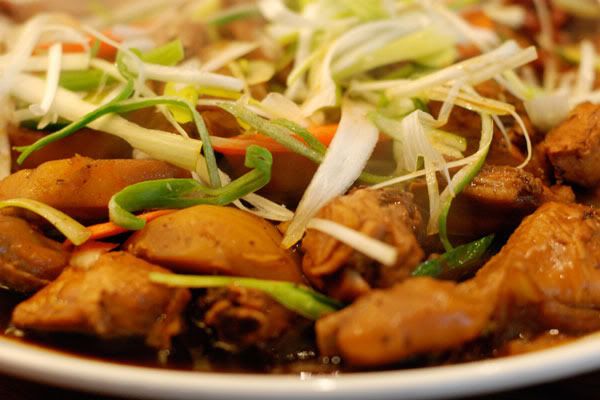 |
| We ate delicious jim ddak in Seomyeon. My favorite Korean food ever! |
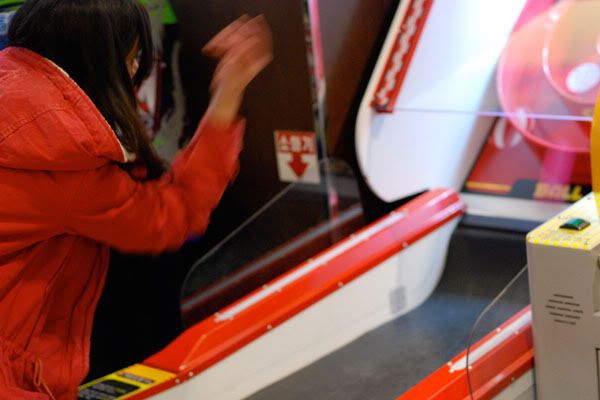
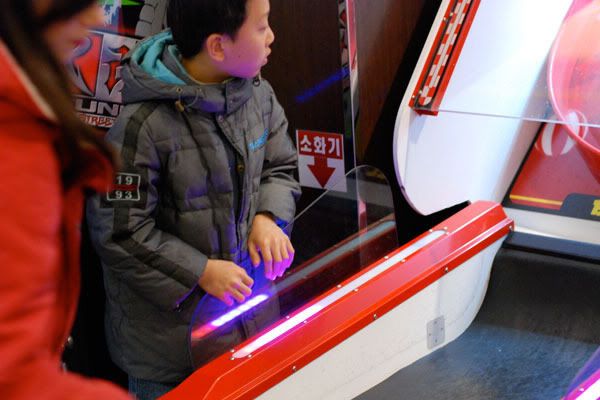 |
| We went to an arcade after to play some awesome games. This kid watched me play skeeball the whole time. A little awkward, kid. |
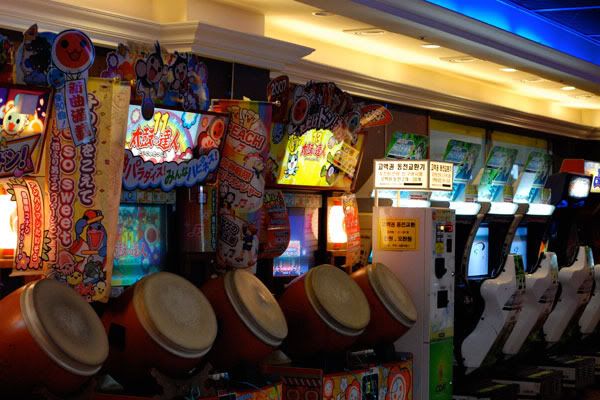
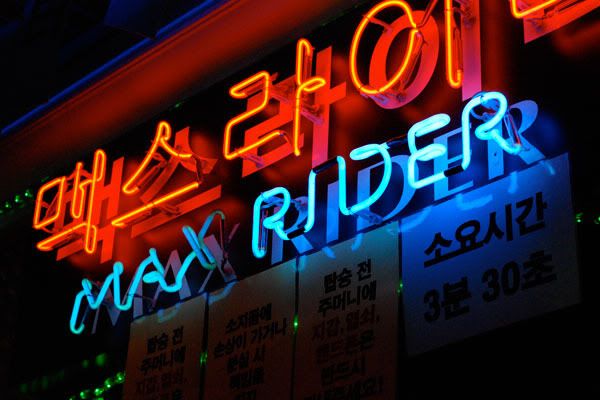 |
| We rode a 3D ride. |
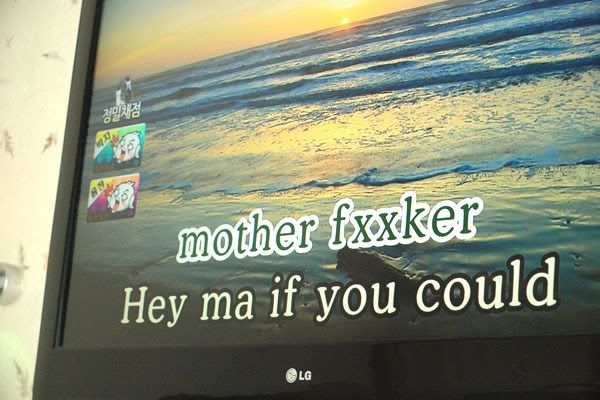 |
| We found the best Noraebang above the arcade. I don't know the name, but the interior is like Mayan/Cambodian influenced. There was an incident when we got off the elevator, I thought we found a sex motel and we tried to run but the guy ran after us and stopped our elevator... Haha! I shall draw it sometime.It is mighty awesome noraebang, plus their song selection was more recent than any other place I've seen. I'm on a boat! |
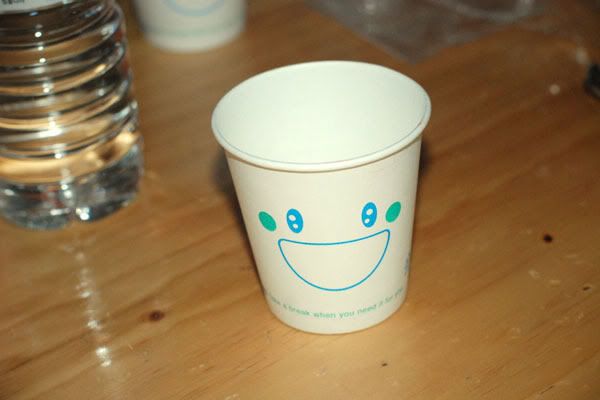 |
| Happy cup says Drink Me! |
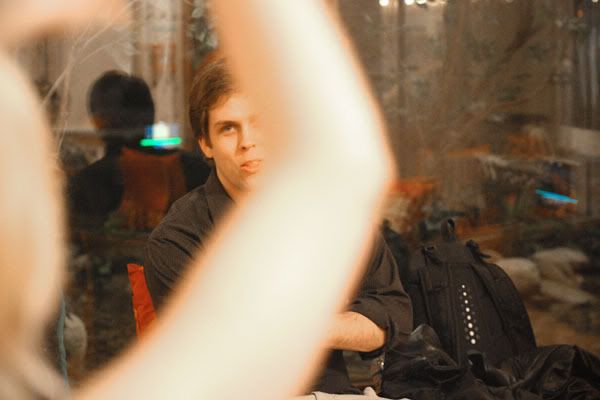

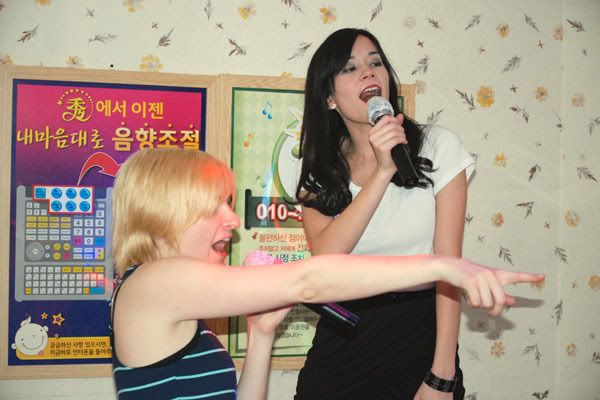
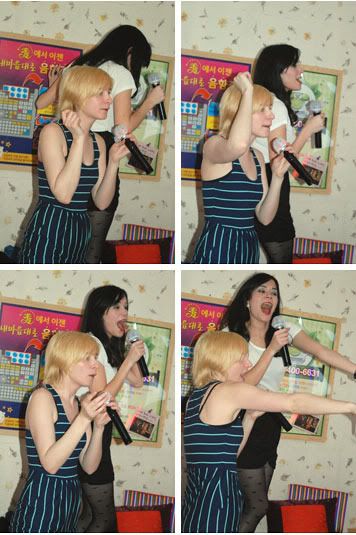 | |
| Ended the night kinda bruised; fell down on my rendition of Singing in the Rain. |
Lee Kun-hee Hates the Idea: Of Course He Does
Large Korean Conglomerates Dominate Korea
Samsung Electronics chairmain Lee Kun-hee “shocked” Korea by making statements critical of the the program proposed by President Lee Myung-bak which would effectively subsidize small and medium-sized businesses in Korea. Here is the Wall Street Journal blog which describes the situation.
The Next Zuckerberg Can’t Come From Korea
Recently, the Chosun Ilbo asked whether or not the next Zuckerberg will come from Korea. The article openly questioned this idea, despite President Lee’s declarations of support. The article pointed out red tape and other barriers. While those may be true, there are greater forces at work that prevent a very successful company being established in South Korea. Some of these examples are blatant. Dong-a Ilbo reported this example of a small company that could not obtain access to certain technology, and also reported that large conglomerates often steal technology from small or medium-sized “partners.” The real point is that newly founded companies do not dare compete with Samsung Electronics or LG Electronics. These newly founded companies do not have access to funds as they do in the U.S. The reason for that is that private equity funds invest in a portfolio of different startups, some of which will inevitably fail. In Korea, the best graduates do not dream of becoming the next Mark Zuckerberg or Steve Jobs. They aspire to work at the largest chaebol. That is the way that the largest chaebol wants to keep it. Google, Apple, Facebook, and Twitter have taught once-dominant Microsoft and Yahoo! some very painful lessons. It is logical that Samsung Electronics and the other large chaebol don’t want to learn those same lessons.
Conclusions
The Chosun Ilbo article is correct, but only partially so. The underemployment of college graduates may provide the inspiration to a young person to begin his/her own venture in Korea. However, there is a great deal of bureaucracy which prevents this. Korean students still aspire to become part of the chaebol structure due to its relative stability (often false). Finally, the largest chaebol want to keep the status quo: Lee Kun-hee’s comments made that perfectly clear.
Can an outdoors-ey person survive in Korea?
Peterson and I are a bit “crunchy” (read: granola eating, nature lovers). And in South Korea, we were in good company: hiking is practically a national sport. Even if you don’t like hiking, there are still plenty of pictaresque views to take in while living and teaching South Korea. Although we chose to live in Seoul, a concrete jungle in many respects, it certainly DID NOT limit our nature possibilities. Here’s why:
- South Korea is 80 percent mountainous
- There are 20 National Parks in South Korea
- South Korea has an awesome public transportation system, which makes weekend getaways a must
Regardless of where you end up living in South Korea, there are oodles of nature spots to check out. Here are some of our favorites:
Bukhansan National Park
Peter and I had our first hiking experience at Bukhansan National Park. In many ways, it was also an introduction to Korean culture/etiquette. (Korean ajummas are speedy hikers and will definitely push you out of the way if you don’t move!)
Bukhansan is ideal because it is centrally located in southeastern Seoul. It’s also a convenient nature getaway when you only have an afternoon to spare. With around five million visitors each year, it’s tends to be one of the most visited. And for good reason! It may be one of the best views of this city.
This park also is also home to Bukhan Mountain Fortress, which is where the royal capital was protected during the Goryeo and Joseon eras. Additionally, Bukhansan houses over 1,300 species of flora and fauna, and 100 Buddhist temples.
Achasan Mountain
Although Bukhansan was the closest National Park in our neck of the woods, we eventually wised up to Achasan Mountain, which was right in our background. This mountain was literally a five-minute cab ride/twenty-minute walk. We made this trek a few times a month, especially on sunny weekends.
At 287 meters high, Mt. Achasan is a nice, easy hike with lots of fun scenery along the way, including bits and pieces of the Acha Mountain Fortress. At the top of the mountain, you also have a great view of Hanggang River valley. There are also a ton of picnic places to nom nom along the way! I even had my Korean-hiking/picnic themed birthday party at this mountain. (It was a prerequisite to dress like a proper Korean climber).
Seoraksan National Park
In the fall, Peter and I traveled with a group of friends to Seoraksan National Park, which is located in the Gangwon Provence and about fifteen minutes from Sokcho city. Although this season is considerably packed with all kinds of hikers, we wouldn’t recommend any other time to go. South Korea’s fall season, September and October, is the BEST time to check out the colorful fall foliage.
To see the best of what Seoraksan has to offer sans the crowds, we suggest visiting this park during Chuseok, or Korean Thanksgiving. Most Koreans will be visiting relatives during this three-day holiday, so it will be considerably less crowded. PLUS Chuseok takes place in September, so you should still be able to take in some of the beautiful color changes.
Seoul Forest/Olympic Park
Now I know I said 5 nature spots, but really both of these parks are tied between Peter and I, so it will have to count as one.
Seoul Forest (Lindsey’s favorite) Located on Ttukseom stop of the green line, was a bit closer to home. Modern sculptures (including a hand you can climb through!) are scattered throughout the park. There’s also a farm within the park where you can feed deer and other wildlife. In the summer, the outdoor pavilion that has tons of outdoors concerts.
Olympic Park. (Peter’s favorite). Olympic Park was created for the 1988 summer Olympcs, and really commenced the economic growth of Seoul. This park is extremely large and hilly, and also houses an art museum. It’s a great place to bike (you can rent them there) and a nice place to lounge. In the winter, there’s even an ice rink (conveniently next to a Lotteria)
Haeundae Beach/Geumjeongsanseong Fortress
Haeundae Beach/Geumjeongsanseong Fortress
While traveling in Busan for a last-minute getaway, Peterson and I got to take advantage of the two most scenic parts of Busan: Haeundae Beach and Geumjongsanseong Fortress. It was nice to experience a semi-tropical environment like Busan. Although it was September, it was plenty warm to swim in the Pacific Ocean.
Besides the beaches, Geumjeonsanseong Fortress, turned out to be an unexpected treat. Although this was a fairly easy hike, it was definitely an entire day of hiking. We started at Beomosa Temple and worked our way through a few of the gates along the way. This can definitely become an all-day affair, so I suggest eating a good breakfast and bringing lunch and tons of water (especially in the summer).
If any of these getaways are too much of ”hike” from where you live, remember to check out what the Korean public transit has to offer. Most of these places we listed have an easy route, either via bus, train or subway. Also, be sure to do a bit of exploring in your own Korean backyard. Either way, if you are a nature lover, you will have your pick of scenic places.
Plastic Surgery Struggling in Korea? Some Untold Facts
The Unknown Truth About Economics in Plastic Surgery
The Seoul Gyopo Guide has spent a great deal of time in explaining howthe strong JPY, when compared to the KRW, has helped Korean exporters enormously. However, there are other unintended consequences to the strong Yen compared to Korean Won. There are two specific areas where this is true: this short post will focus on the cosmetic surgery (성형외과) industry.
This article in the New York Times describes some of the current difficulties in South Korea for the cosmetic surgery industry.. The story tells the tale of how both consumers and surgeons are struggling. More than anything else, the Seoul Gyopo Guide believes that it is rising inflation which has caused the need to curtail cosmetic procedures. Korea has been hit but an unsavory combination of facts: foot and mouth disease has driven the cost of everyday items such as pork and milk, energy prices are rising due to Middle East tensions, apartment prices in Korea continue to fall (not rise), borrowing by everyday Koreans continues to increase. That, of course, is one side of the equation. Less patients, less revenue. However, there is another side to the story which actually makes the situation worse than reported.
Strong Yen Hurts Korean Plastic Surgeons
The New York Times article correctly points out that the strength of the Japanese Yen and the Chinese Yuan have eased some of the difficulties facing cosmetic surgeons. That is only partially true. There are two extra points which the New York Times did not report, which are far more important. First, many of the real estate agreements for Seoul doctors’ offices are based on the Japanese Yen. What does that mean? It means that in order to buy/lease office space, the doctor borrowed in Yen, converted it to Won, and then used that money to buy the office. The rationale for that is that the interest rate is based on the Japanese interest rate, which is very, very low. HOWEVER, when the loan has to be repaid, it is a Japanese Yen amount that must be repaid.
Let’s take an example: a cosmetic surgeon wants to buy an office for 500,000,000 KRW. He/she borrows that amount in JPY, assuming that the JPY/KRW = 10.00, so the amount JPY borrowed is 50,000,000. When the loan is due, let’s say the JPY/KRW = 13.50 (close to current rate). Well, the surgeon owes JPY 50,000,000 which is now equal to 675,000,000 KRW (=JPY 50,000,000*13.5). That surgeon has lost 175,000,000 KRW when he repays the loan. On the other hand, he/she has also paid a lower interest rate during the time of borrowing than he/she would have if the borrowing was in Korean Won. This is called Yen-based borrowing/lending, and it is the cause of great additional stress on the surgeons (and other doctors in Korea).
It Gets Worse
In addition to the cost of real estate, cosmetic surgeons face another very large cost: equipment. As you probably know, most of the equipment used in cosmetic surgey is based on laser. Well, those machines cost a lot of money. Many surgeons, not all, but many, cannot afford to purchase these machines for cash. There are good reasons to not own a laser machine used for cosmetic surgery, most importantly is that technological changes will make machines obsolete quickly. So, the surgeons rationally choose to lease these machines. However, lease agreements for these machines still cost money, and a lot of it. SO, the surgeon borrows the money in Japanese Yen. Now all you need to do is go back up and read the previous example, and voila, you have the same thing. The surgeon has to pay a Yen amount.
The Strong Yen is Hurting Plastic Surgeons
The issue is that at the same time that demand for cosmetic surgery has declined, the costs faced by cosmetic surgeons themselves are not declining, and in fact, can be rising due to the strong Yen compared to the Korean Won. That is knows as being between a rock and a hard place. There was an interesting point in the New York Times article. That is that foreign patients come to Korea to have these procedures. It is true, but the beneficiaries of that influx will be few and far between.
The Daily Grind
We begin our day waiting for the school shuttle. It picks us up every morning a few blocks from our apartment. The bright yellow shuttle is full of students when it arrives and the driver and adults on the shuttle all tell us "Good Morning!" when we step on. They are very excited to see us every day and when I get the front seat the driver looks over at me constantly, smiling and repeating, "Good Morning!" He tries to tell me stories of the things happening on the streets of Jinyeong, but I don't understand much of it. He did an excellent job of pantomiming a motorcycle crash that I guess happened earlier this morning.
We have about 30 minutes to get our classrooms and materials ready for the day. We sometimes get on the computer to make a quick homework assignment or class activity. Sipping coffee, makin' copies, you know the usual morning drill. At 10am our classes begin.
I teach two straight class periods with Sun class, the 3rd year 7 and 8 year olds. They have been at the school for a while and their English is pretty good. They know the routines and classes and teachers all pretty well by now. I start class by doing a run-down of what we'll be doing and reviewing the class rules. I spend some time teaching them some conversational phrases and having them practice with me and each other. We do some flashcards for a while as well. The "flashcard game" requires them to be quiet and raise their hands when I show each new card. I call on the first hand up and they put their answer into a sentence: "He is a police officer." Each day is a different book or workbook or journaling activity. I go through a little lesson on what they'll be doing and then go through some workbook pages with them. If all goes well with their behavior and they still have all 3 of their stars, I'll play a game with them, or they can do coloring pages, or use the colored folding paper that they really like.
After those two classes it is "Specials" time. It isn't called that necessarily but that is just what I've learned to call it from school back home. Each day is either Science, Art, Theme day, Cooking or Gardening, or Assembly. During this time all of the classes come together and Nikki and I lead some sort of activity for all of the kids. This usually involves some prep time beforehand, as all of the students are together and we have to hold their attention for 40 minutes. We usually start off with a song or some little lesson and then have them do an activity at their tables. The Korean teachers are there to help out, and they really are a huge help for us.
After this Nikki and I head to lunch. We usually eat whatever is offered for school lunch, which is hit and miss. Some days the lunch is really good and filling, other days it is sketchy and we leave still hungry. Not much different from school lunches across the globe I suppose.
After Lunch we are pretty busy. We both teach a few classes in a row of kids from the pre-school beside us. These kids have very little English skills and we only see them once or twice a week. At 430pm we are finished! We usually spend about 30 minutes getting things ready for the next day and cleaning up a little, then we walk home. We are usually pretty tired from the busy day.
Our class sizes are pretty small. My Sun class has 6 students and that is pretty normal for class sizes. When classes from the school beside us come over there are about 11 or 12 students. Our Specials class has about 30 students, which is all of the students who attend English Friends. We give homework a few times per week in a homework folder or workbook that the students take home with them. Some of the afternoon students have already attended elementary school, then our classes, and then go on to another activity or practice, such as tae kwon do. These are very busy little kids.
They are really kind hearted kids, though. They love to participate in activities like reading, singing and coloring. We make all kinds of pictures and crafts everyday. I feel a little silly sometimes but I really like making crafts and coloring right along with them. Of course, there are times when they can be excited and loud and squirly. This is to be expected. Often they will work hard for things like stickers and colored paper and playground time, so things are never too bad in the behavior sense. It is hard to stay mad at someone who, when they see you in the morning, yells your name and runs to hug you.
As far as curriculum goes, it is all very basic English. Sight words, basic conversation sentences, vocabulary, and grammar are what Sun class usually covers. Nikki teaches the younger classes and they do more songs and games and poems and phonics activities. There are 3 Korean teachers here who also teach classes and they are always helpful when we need to translate something or need anything else. They have been very accommodating and tolerant of our rookie mistakes. It has taken me most of this week to grasp a few of the daily routines like homework folders and other little responsibilities, but the staff here are good to only give me gentle reminders.
I hope to bring my camera in next week to take some pictures and videos of our classes and students and then post them up here. Cheers! - Steve Teacher
plans and concerns
I recently started reading “Cognitive Surplus“, a book about how people can create collaboratively online. The thesis of the book is that for years, TV demanded that we only absorb media. Modern media -delivered by the internet – is more of a give-and-take* proposition. We can do more that receive information; we can create it, too.
Since starting the book, which I enjoy, I haven’t created anything online although my time online hasn’t decreased much.
I’ve been distracted by concern over my wife who is in the Korean Coast Guard and has been at sea for more than a week now. We’ve spoken to her, so I know she is fine, but her job is more dangerous than I had imagined. To my knowledge, she is not in the West Sea but I have no information either way.**
I see that rice season may have started already. It seems early. I am surprised; last year we started the first planting in May and the second planting in June. The planting I was involved in was in southern South Gyeongsang province so I would expect it to be ahead of the more northern Gyeonggi province.
________________
* a student majoring in 국제물ㄹ류 – or maybe 국제관계 described his major as “give and take”. After discussion, we agreed that maybe “import/export” or “International Relations” was a more august sounding title.
**I’d started a rambling, stream-of-consciousness type of post and left it in the draft folder.
Five easy day trips out of Seoul
Seoul is a wonderful place to go exploring. With several historic palaces, dozens of Buddhist temples, and more shopping than you have money, you might be wondering ‘why go anywhere else around Korea?’ The simple answer is to get off the beaten path, and to explore some places tourists / foreigners don’t go as often.
All of these day trips are easy to reach from Seoul’s excellent public transportation system.

1. Jayu Park and Chinatown, Incheon. A great place to learn some history. During World War II, General MacArthur led the Incheon Amphibious Landing Operation to get back control of Incheon – an important port city. Within walking distance is Korea’s only official Chinatown – recently remodeled and easy to find. Being right on the coast means you’re not far from the airport, and there’s plenty of seafood for when you’re hungry. This is one area that hasn’t seen a lot of renovation – check it out to see what Korea might’ve looked like decades ago. Incheon station, line 1, walk 5 minutes towards the Chinese gate. Walk up the hill and up the stairs to reach Jayu Park.
2. Bukhansan, northern Seoul. Parts of this monstrous mountain are outside of Seoul proper, and the area feels far further from the big city. Head up this northern mountain and walk alongside the ajosshi (literally, married man) and ajumma (literally, married woman) with all their gear and brightly-colored clothes. With around 100 mountain trails, there’s more mountain than you’ll have time to conquer in one day, so read the maps carefully to make sure you don’t get lost! Go on the weekdays if possible, or watch out for large crowds – hiking is a huge pastime here. Start from Dobong station (line 1, exit 2), Gupabal station (line 3, exit 1), or Suyu station (line 4, exit 3).
3. Gwangneung, Namyangju. One of 18 neung, or royal tomb clusters honored as a UNESCO World Heritage site. Gwangneung holds the remains of King Sejo and Queen Jeonghui from the Joseon Dynasty. Although there are 17 other tomb clusters around the Seoul area, these are one of the few that allow visitors to get up close and personal with the stone statues near the tomb mound. Bonus: The Korea National Arboretum is in the area. Cheongnyangni station (line 1, exit 4, bus 707 to the end of the line, then transfer to bus 21).
4. Yongmunsa, Yangpyeong. This Buddhist temple is part of a larger entertainment complex, complete with some amusement park rides. Get closer to the temple to see a 1,100 year old tree – one of the oldest in Korea, and a National Monument – and the Gwaneumbosal Bodhisattva, the Bodhisattva of Mercy (above). Yongmun station, exit 2, (Jungang line) walk to the bus terminal and catch a bus for Yongmunsan.

Yes, this was taken from the ride itself – the advantages of point-and-shoot cameras…
5. Seoul Grand Park, Gwacheon. Go ahead, find it ironic that the park named after Korea’s biggest city isn’t actually inside that city’s boundaries. When you’re done, hop on line 4 and go just south of Seoul proper to a large park, the world’s 10th largest zoo, an art museum, and an amusement park. The place is so big it takes the trolley some 20 minutes to run a full loop. Since there’s easily enough here for three day trips, pick your destinations carefully if you’re limited to a single day. Seoul Grand Park station, line 4.
This post was originally published on my blog,Chris in South Korea. If you are reading this on another website and there is no linkback or credit given, you are reading an UNAUTHORIZED FEED.
Join Korean Language School at KOTRA
Korean Language School (KLS) at KOTRA is free Korean language courses offered since September 2007 under the sponsorship of the Ministry of Knowledge Economy. As part of our efforts to create a friendly environment while staying in Korea, KOTRA KLS has continued to provide comprehensive and practical study programs about Korea for foreign technicians hired in Korean companies.
Schedule for 2011 (subject to change)
Term Date Registration
1ST 04/04 ~ 05/19 03/14 ~ 03/25
2ND 05/23 ~ 06/30 05/02 ~ 05/13
3RD 09/05 ~ 10/20 08/08 ~ 08/19
4TH 10/31 ~ 12/15 10/04 ~ 10/14
2 Registration Information
(1) Eligibility: E-7 VISA holders
(foreign technicians hired in Korean companies)
(2) Classes available for this semester (subject to change)
Class Day Time Tuition
Beginners Mon & Wed 7:00pm~8:30pm Free
Daily Korean Mon & Wed 7:00pm~8:30pm Free
Business Korean Tue & Thu 7:00pm~8:30pm Free
(3) Class Size: Maximum of 15 Students per Class
(4) Venue: Invest Korea Plaza Building (IKP, next to KOTRA)
Application for Korean Language School
1. Applicant Information
- Name:
- Company (Organization):
- Visa Type:
- Email:
- Telephone (Mobile) :
2. Program Selection
Class Day Time Selection
Beginners Mon & Wed 7:00pm~8:30pm
Daily Korean Mon & Wed 7:00pm~8:30pm
Business Korean Tue & Thu 7:00pm~8:30pm
- Please fill out the application form and submit via e-mail to: [email protected]/[email protected]
- We can adjust the number of students if there are too many applicants. We will let you know whether your application is accepted.
- After registration is completed, you are required to submit the documents listed below to your teacher on the first day of the class.
- Required documents: Copy of your alien registration card or visa, Certificate of Employment
Contact Information
KOTRA Contact KOREA
HYE YOUNG YU / SUNG HEE AHN
Tel) 02-3460-7398 / 02-3460-7376
Fax) 02-3460-7915
e-mail) [email protected] / [email protected]
Directions to KOTRA (Invest Korea Plaza)
1. Public Transportation
- Subway Line No. 3 : Yangjae Station (Exit 7)
- Transfer to the buses bound for Bundang or Sungnam
Green buses: 4432
Blue buses: 140, 440, 462, 470, 471, 407, 408 - Get off at Nonghyup Hanaro Mart or KOTRA
(IKP is located just across Hyundai-Kia Motors)
2. By Car
- Take the right-hand lane (do not take the lanes to the underground passage) from Gangnam Station or Yangjae Station towards Bungdang or Seognam.
- Turn left at Yeomgok Junction and enter the Invest Korea Plaza (through its rear gate) at the first pedestrian walk.







 RSS Feed
RSS Feed
Recent comments